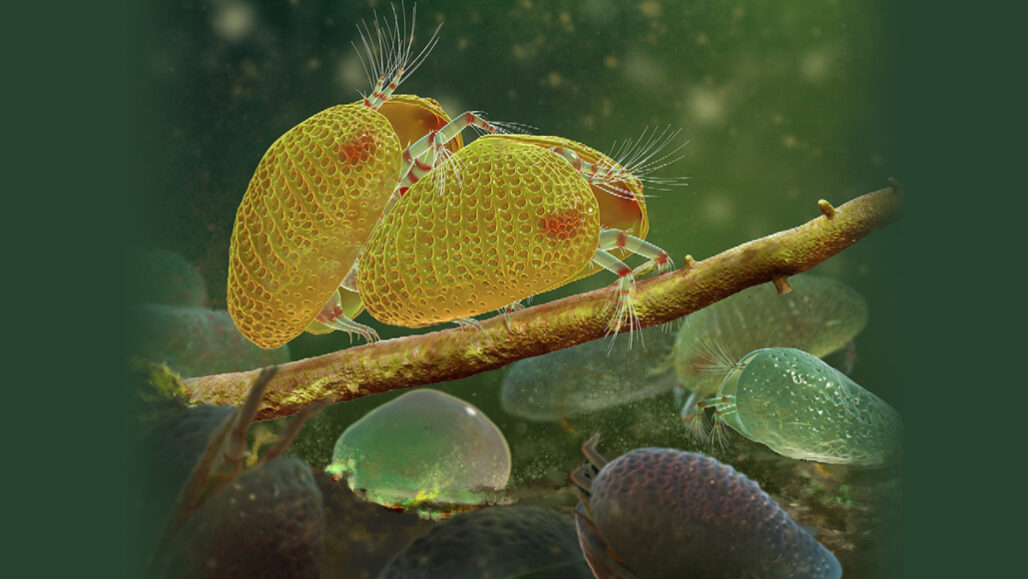A tiny crustacean fossil contains roughly 100-million-year-old giant sperm

Ostracods look like nothing more than seeds with legs. But some species of these tiny crustaceans have an outsize claim to fame: giant sperm. In the most extreme case, it can stretch 1.18 centimeters, over three times the length of an adult.
A newfound collection of ostracods preserved in amber reveals that megasperm dates back to at least about 100 million years ago during the time of the dinosaurs, researchers report online September 16 in Proceedings of the Royal Society B. A tangle of sperm found inside a female is among the oldest, if not the oldest, fossilized sperm ever found.
A single piece of amber from Myanmar held 39 ostracods, including many from a newly discovered species, Myanmarcypris hui. Using micro-CT scans, Dave Horne, a micropaleontologist at Queen Mary University of London, and colleagues peered inside a few of the tiny shelled animals.
“We knew from looking at the piece of amber with an ordinary light microscope that there were antennae and legs sticking out of the shell, so we were hopeful of finding internal organs,” Horne says. If delicate parts like legs and antennae are preserved, it’s likely that other soft parts are too, he says. “But what we saw … exceeded expectations.”